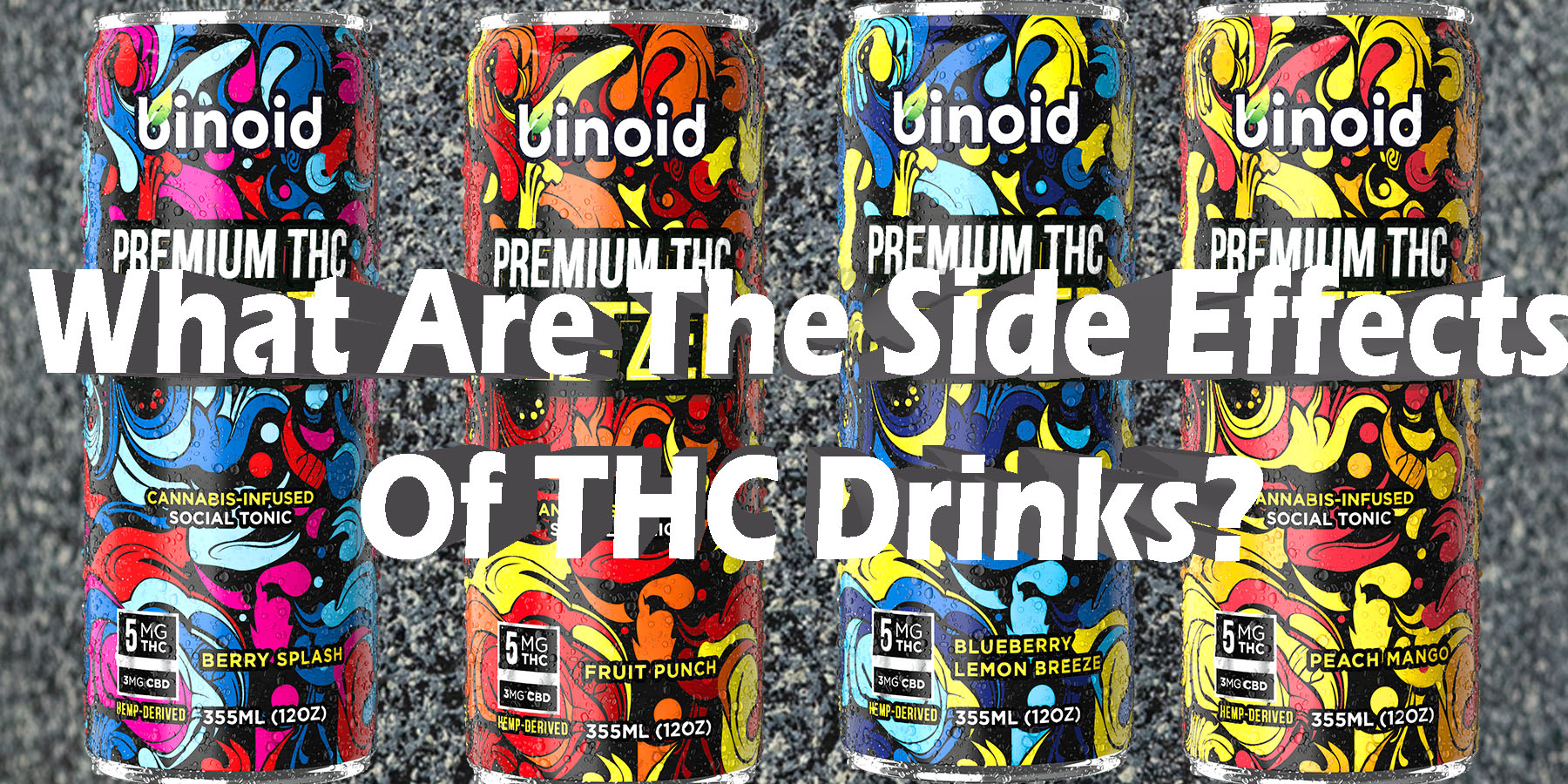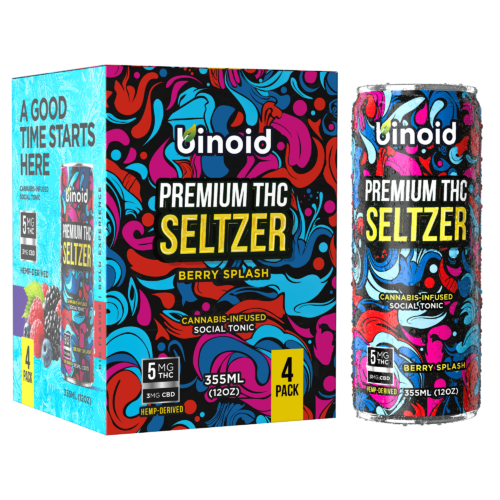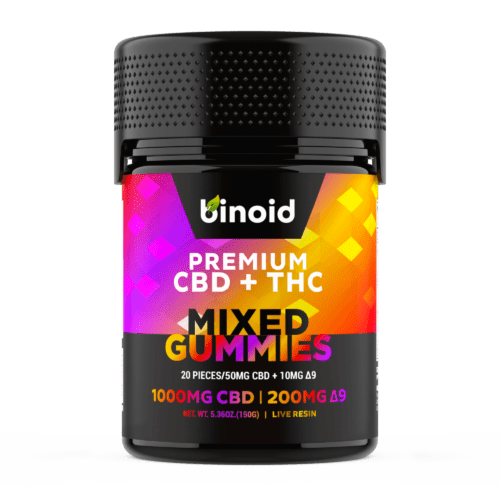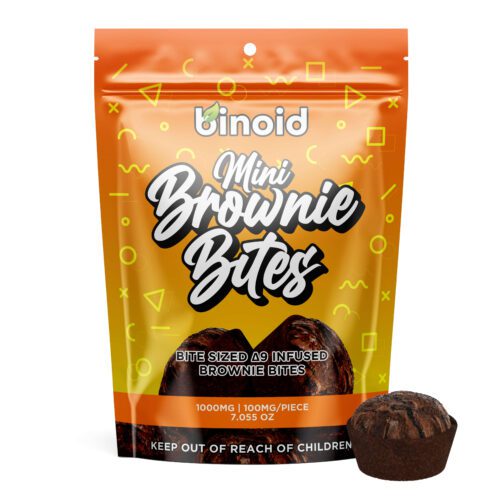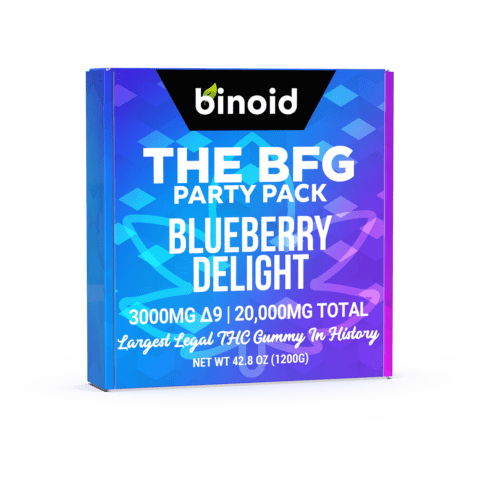Every journey worth taking involves navigating a bit of unknown territory, and exploring the world of cannabis-infused beverages is no different. While many seek out these THC drinks for the blissful and euphoric destinations they promise, it’s wise to be aware of the potential detours and bumps one might encounter along the way.
Understanding the full spectrum of effects, including those that are less desirable, isn’t about fear; it’s about empowerment. It’s about transforming a simple act of consumption into a conscious, well-informed choice. By appreciating the complete picture, you can better prepare for your experience, ensuring the path you take is as smooth, enjoyable, and predictable as possible. After all, the best explorers are always the most prepared.
To Buy THC Drinks Click Here
Recommended products
What are THC Drinks?
Before delving into the less-desirable effects one might encounter, it’s crucial to have a clear understanding of the beverages themselves. In essence, a THC drink is a ready-to-consume beverage that has been infused with a precise, measured dose of Tetrahydrocannabinol (THC) – the most well-known compound in the cannabis plant and is primarily responsible for the feelings of bliss and the shift in perception many people associate with its use. These drinks are crafted to be approachable and convenient, presenting the effects of cannabis in a familiar format. The true innovation lies in the science that allows the naturally oil-based THC to blend perfectly with water-based liquids, creating a consistent, shelf-stable, and enjoyable product. Not to mention, a discreet and straightforward way to partake.
The modern market for THC drinks is astonishingly diverse, with a beverage designed to suit nearly any palate, occasion, or desired experience. This variety is made possible through sophisticated production techniques that allow cannabis extract to be seamlessly blended into liquid. While the base beverage changes, the core technology of emulsification—often nano-emulsion for faster effects—remains the key to creating a stable and consistent product. Let’s break these down further here:
THC Seltzers: These have become the poster child of the modern cannabis beverage movement, prized for their light, crisp profile and low-calorie nature. The crafting process involves infusing carbonated water with a nano-emulsified THC extract and a subtle touch of natural fruit flavor. Their “sessionable” quality, with doses typically between 2mg and 5mg of THC, is a key feature. This low-dose approach is specifically designed to provide a manageable, gentle uplift, making it easier for users to control their experience and avoid the intensity that can sometimes lead to unwanted effects, which is a primary consideration for many consumers choosing this option.
THC Sodas: Offering a more robust and sweet flavor experience, THC-infused sodas tap into a sense of nostalgia with classic flavors like rich root beer or creamy orange soda. The production involves blending a traditional soda syrup base with a measured dose of THC extract before carbonation. These beverages often come in slightly higher doses than seltzers, which is an important factor for consumers to note, as a higher dose combined with a significant amount of sugar can influence the overall physical experience and how the body processes the THC. The experience is designed to be an indulgent and fun treat.
THC Waters: Crafted for the purist, THC-infused waters are the embodiment of simplicity, often containing no sugar, calories, or artificial ingredients. Their composition is straightforward: purified water infused with a fast-acting, water-soluble THC extract. Some may have a very delicate hint of natural fruit essence. The clean and simple nature of these drinks means the user experiences the effects of the THC without other influencing factors like sugar or caffeine, offering a very direct and unadulterated pathway to a clear-headed sense of well-being, but also a direct experience with any potential side effects.
THC Lemonade: This classic and universally loved beverage provides a familiar and delicious format for cannabis consumption. The inherent tartness and sweetness of lemonade can make it a very palatable option, especially for those new to the taste of cannabis extracts. However, like sodas, the sugar content is a variable to consider. Brands offer a wide spectrum of styles and dosages, so reading the label to understand both the THC content and the sugar content is key to anticipating the full physical experience of this refreshing, mood-lifting beverage.
THC Tea: By merging the ancient ritual of tea drinking with modern infusion science, THC teas offer a unique and often calming experience. The process involves carefully infusing various types of tea, from soothing chamomile to energizing green tea, with a consistent and reliable dose of THC. The natural compounds in different teas can work alongside the THC to shape the overall effect. For example, a calming herbal tea might enhance the relaxing qualities of the THC, providing a synergistic effect that consumers often seek for a tranquil evening.
THC Coffee: The combination of a stimulant like caffeine with THC creates a dynamic and complex experience. These products, whether pre-made cold brews or ground coffee for home brewing, offer a state of “alert relaxation.” However, this pairing is one that requires careful consideration. The interaction between caffeine and THC can be unpredictable for some individuals, potentially heightening certain side effects like an increased heart rate or feelings of unease. Consumers choosing this beverage are opting for a unique synergy, but one that warrants a mindful approach.
THC Cocktails: These sophisticated non-alcoholic “mocktails” are designed to replicate the complex flavor profiles of classic cocktails, using a blend of botanicals, juices, and extracts. They provide the ritual and celebratory feeling of a cocktail hour but with the effects of THC instead of alcohol. It’s important for consumers to remember that although they taste like a familiar cocktail, they should not be consumed with the same rapidity as their alcoholic counterparts, as the onset and nature of the effects are entirely different, a crucial factor in avoiding overconsumption.
THC-infused Wines and Beers: This innovative category involves dealcoholizing traditional wine or beer and then infusing it with THC. The goal is to retain the authentic flavor and mouthfeel of the original beverage, offering a seamless substitute for those who love the taste but want to avoid alcohol. As with THC cocktails, the familiar format can be misleading. A user’s experience with the consumption patterns of traditional beer or wine does not translate, and a slow, mindful approach is essential to ensure a positive outcome with these novel drinks.
THC Drink Mix: Offering maximum convenience and personalization, THC drink mixes come in a soluble powder or liquid concentrate form. This allows a user to transform any beverage of their choice into a THC-infused drink. While this offers great control over flavor, it also places the responsibility squarely on the user to dose correctly and to be aware of how the base beverage they choose (e.g., a sugary juice vs. plain water) might interact with or influence the overall experience and potential side effects of the THC.
The general effects of consuming a THC drink are primarily characterized by their onset and duration, which differ significantly from other consumption methods like traditional edibles. Many beverages on the market utilize nano-emulsion technology, which breaks the THC oil into microscopic, water-dispersible particles. This allows the body to absorb the THC much more quickly, often through the soft tissues in the mouth and throat, bypassing a long journey through the digestive system. As a result, users typically begin to feel the effects within 10 to 20 minutes. This rapid feedback loop is a key feature, as it allows an individual to better assess the effects in real-time, which is crucial for managing the experience and avoiding the common pitfall of taking too much before the effects have even begun.
The audience for THC drinks is diverse and continues to expand as cannabis becomes more mainstream. A primary group of consumers are those who are “canna-curious” but are put off by the idea of smoking or vaping. The familiar and socially acceptable format of a beverage provides a much less intimidating entry point. Another significant demographic is composed of individuals actively looking to reduce or replace their alcohol consumption. THC drinks offer a way to participate in social rituals and achieve a pleasant buzz without alcohol and its associated next-day consequences. Furthermore, the growing wellness movement has drawn in health-conscious consumers who are attracted to the many low-sugar, low-calorie, and all-natural options that align with a more mindful lifestyle.
Recommended products
What Potential Side Effects Could THC Drinks Have?
While the journey with THC drinks can be filled with pleasant experiences like bliss and relaxation, it’s equally important to be aware of the less desirable effects that can sometimes arise. These potential side effects are often directly related to dosage, individual tolerance, and the specific type of beverage consumed.
A high-dose THC soda, for example, might lead to a more intense and disorienting experience than a low-dose, calming THC tea. Understanding these potential outcomes isn’t about creating fear, but about fostering respect for the substance and empowering you to make choices that lead to a positive and comfortable experience. Recognizing what might happen allows you to prepare and respond, ensuring you remain in control of your journey.
Recommended products
THC Drinks Side Effects List
The body’s reaction to THC can sometimes manifest in physical ways that, while typically not serious, can be uncomfortable if unexpected. Being aware of these potential physical side effects below can help you recognize and manage them effectively:
#1: Dry Mouth and Eyes: One of the most common and well-known side effects is a notable feeling of dryness in the mouth, often called “cottonmouth,” accompanied by dry, sometimes red eyes. This occurs because THC interacts with cannabinoid receptors that are responsible for saliva production and tear secretion, temporarily reducing their output. While this is a harmless side effect, it can be uncomfortable. It’s a direct physiological response to the THC itself and is not simply a matter of dehydration, although staying hydrated can certainly help to alleviate the sensation.
#2: Increased Heart Rate: Shortly after consumption, some individuals may notice a temporary increase in their heart rate, a condition known as tachycardia. This happens because THC can cause blood vessels to dilate, which makes the heart work a bit harder to pump blood throughout the body. For most healthy individuals, this effect is temporary and benign, subsiding as the other effects of THC wear off. However, for someone who is not expecting it, the sensation of a racing heart can be unsettling, making it an important physical side effect to be aware of before consuming.
#3: Impaired Coordination and Motor Skills: THC can have a significant, albeit temporary, impact on parts of the brain that control balance, coordination, reaction time, and motor skills. This can manifest as feeling a bit clumsy, unsteady on your feet, or having slower reflexes than normal. This side effect is the primary reason why it is unsafe and illegal to operate a vehicle or any heavy machinery after consuming a THC drink. The impairment is dose-dependent, meaning the higher the dose, the more pronounced the effect on your coordination will be.
#4: Dizziness or Lightheadedness: Some users, particularly those who are new to THC or who have consumed a higher dose than they are accustomed to, may experience feelings of dizziness or lightheadedness. This is often related to THC’s effect on blood pressure, as the vasodilation (widening of blood vessels) can cause a temporary drop. Standing up too quickly can sometimes exacerbate this feeling. While the sensation usually passes quickly, it can be disorienting, so it’s best to remain seated or move slowly if you begin to feel lightheaded after consuming a THC beverage.
#5: Changes in Appetite: While the “munchies” are often touted as a fun part of the cannabis experience, an intense and unsought-after increase in appetite can also be considered an unwanted side effect, especially if it leads to overeating uncomfortable foods. Conversely, though less common, some individuals may experience a temporary decrease in appetite or mild nausea, particularly with very high doses. These effects on the digestive system and appetite signaling are a direct result of THC‘s interaction with receptors in the brain and gut, showing how a single compound can produce varied physical responses.
Recommended products
Potential Side Effects of THC Drinks Mentally
The mental effects of THC are its main draw, but this is also where the most challenging side effects can occur, especially with overconsumption. Being prepared for these potential mental shifts below is key to navigating them successfully:
#6: Feelings of Unease or Paranoia: This is perhaps the most well-known and unpleasant potential side effect of THC. While many people experience relaxation, higher doses or individual sensitivity can sometimes tip the scales into feelings of unease, social discomfort, or, in more extreme cases, paranoia. This can involve having irrational, worried thoughts or feeling overly self-conscious. This effect is highly dependent on both the dose and the user’s mindset (“set”) and environment (“setting”), highlighting the importance of consuming in a comfortable and safe space.
#7: Short-Term Memory Lapses: THC can temporarily interfere with the brain’s ability to form and retrieve short-term memories. This can lead to moments of confusion, like forgetting the thread of a conversation midway through a sentence or being unable to recall what you were doing just moments before. While this effect is temporary and memory function returns to normal as the THC wears off, it can be disorienting and frustrating. It’s a classic side effect that underscores THC’s direct impact on cognitive processing.
#8: Altered Perception of Time: A common mental effect is a distortion in the perception of time, where minutes can feel like hours or, conversely, time may seem to speed up. While this can be a fascinating aspect of the experience for some, for others, it can be a disorienting and unsettling side effect. Losing a clear grasp on the passage of time can contribute to feelings of unease, especially if you are in an unfamiliar environment or have time-sensitive responsibilities, making it a crucial mental effect to be prepared for.
#9: Feelings of Lethargy or Sluggishness: While some THC drinks are formulated to be uplifting, many, particularly those with Indica-leaning terpenes, can lead to significant feelings of lethargy or mental sluggishness. This “couch-lock” phenomenon can feel deeply relaxing if that is the goal, but if it’s unintended, it can feel like an unproductive and demotivating mental fog. This effect can also linger after the main euphoric feelings have subsided, leaving a person feeling tired or groggy for a period afterward.
#10 Heightened Sensory Overload: The same sensory enhancement that can be a benefit—making music sound richer or colors appear more vivid—can become a negative in certain situations. In a loud, crowded, or visually chaotic environment, this heightened sensitivity can lead to sensory overload. The mind may feel overwhelmed and unable to process all the incoming stimuli, which can contribute to feelings of unease or a desire to withdraw. This illustrates how a potential benefit can quickly become a side effect depending entirely on the context and environment of consumption.
#11 Feeling Great: We had to put this in here, many people feel awesome after taking THC Drinks, especially Binoid THC Drinks. Enjoy Responsibly.
Recommended products
How to Avoid Those Potential Side Effects When Consuming THC Drinks
Understanding the potential side effects of THC drinks is the first step, but the second, more empowering step is learning how to actively avoid or mitigate them. A negative experience is rarely random; it’s often the result of preventable factors like improper dosing or an uncomfortable environment. By approaching consumption with knowledge and intention, you can significantly increase your chances of having a consistently positive and enjoyable experience. The power to steer your journey toward bliss and away from discomfort lies in a few simple, responsible practices. The following strategies are essential tools for any consumer’s toolkit:
Embrace the “Start Low and Go Slow” Philosophy: This is the golden rule of responsible cannabis consumption for a reason. If you are new to THC drinks or trying a new product, always start with the lowest possible dose, typically between 2mg and 5mg of THC. Read the label carefully to understand the dosage per serving. After consuming that first low dose, you must wait. Even with fast-acting drinks, it’s wise to wait at least 60 minutes to fully assess how you feel before even considering consuming more. This patient approach prevents the most common mistake: consuming too much too quickly and becoming uncomfortably overwhelmed.
Choose Your Environment and Company Wisely: The principle of “set and setting” is your best defense against mental side effects like unease or paranoia. Your “set” (your mindset) and “setting” (your physical environment) have a profound impact on your experience. Choose to consume THC drinks when you are already feeling calm and positive, not when you are feeling down or agitated. Equally important, be in a physical space where you feel safe, comfortable, and secure, preferably with people you trust. Avoiding chaotic, unfamiliar, or stressful environments dramatically reduces the risk of a negative mental turn.
Stay Hydrated and Keep Snacks on Hand: Actively mitigating the most common physical side effects can make your entire experience more pleasant. To combat the inevitable dry mouth, have a non-alcoholic, non-caffeinated beverage like water on hand and sip it regularly throughout your experience. Having some of your favorite snacks nearby can also be helpful. A small meal or snack before you consume can help regulate absorption, and having something to eat can help ground you and ease dizziness if you start to feel too lightheaded or overwhelmed.
Read the Label and Review the Lab Report: Being an informed consumer is a powerful avoidance strategy. Never consume a product without first reading the label to understand its potency (mg of THC per serving and per container). Reputable brands will also provide a Certificate of Analysis (COA), usually accessible via a QR code. Reviewing this lab report confirms that the product contains the amount of THC it claims and, just as importantly, is free from harmful contaminants like pesticides or heavy metals. Consuming a clean, accurately dosed product eliminates many unknown variables that could lead to a bad experience.
Avoid Mixing with Alcohol or Other Substances: It is strongly advised not to mix THC drinks with alcohol. Alcohol can significantly amplify the impairing effects of THC, leading to a much higher level of intoxication than either substance would produce on its own. This combination can increase the likelihood of dizziness, nausea, and impaired judgment, making for an unpredictable and often unpleasant experience. To ensure you are feeling only the intended effects of the THC beverage, it is always safest to consume it on its own.
Bottom Line: The Potential Side Effects of THC Drinks Can Vary Based on Numerous Factors
Ultimately, the journey with a THC-infused beverages is a deeply personal one, where the line between a sought-after effect and an unwanted side effect is drawn by a confluence of personal and environmental factors. The beverage itself is just one ingredient in the recipe for your experience. The final outcome is profoundly shaped by the dosage you choose, your unique body chemistry and tolerance, the mindset you bring to the moment, and the comfort of your surroundings.
Understanding this interplay is the key to empowerment. It transforms the consumer from a passive participant into a conscious creator of their own experience, armed with the knowledge to navigate, mitigate, and a an informed choice that prioritizes well-being and enjoyment above all else.

